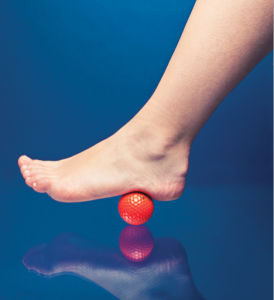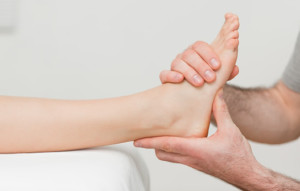Plantar Fasciitis Prevention and Treatment
Plantar Fasciitis may be hard to pronounce (it’s read as “fashee-EYE-tiss”), but it is actually harder to bear. For runners with this problem, intense pain could be felt at the undersides of your feet first thing in the morning or after running. The pain could worsen throughout the day. OUCH!
I used to have plantar fasciitis and it really hurts. It strikes when you least expect it. It hurts me in the middle of the run. It hurts when I step out of the bed early in the morning.
The plantar fascia is a long thin ligament that connects your heel to your foot. It could be found immediately under the skin and supports the arch of your foot. Although this structure is designed to absorb stress and strain on our foot, too much could still cause damage or swelling which leads to chronic pain. This will leave the runner sidelined for months.
Plantar Fasciitis are more common among females, overweight people, people with jobs that require too much standing or walking, and people with very flat feet or very high arches.
Here are a few tips to prevent plantar fasciitis and what to do when it strikes.
PLANTAR FASCIITIS PREVENTION
Stretching and Strengthening. This is one of the best ways to avoid any injury. Invest in stretching regimens before running to avoid having tight calf muscles when you run. Make sure that your regimen would include exercises for the feet. The video below about plantar fasciitis treatments works also for prevention of plantar fasciitis. Be sure to watch it.
Watch where you tread. If you are part of the at risk people for plantar fasciitis, it is recommended that you try to run on softer surfaces like grassy areas. Of course if you are in the city it could be a challenge to find a good running spot so the next tip could help.
Invest on appropriate support. If you are high arched or flat footed and still want to run, invest on running shoes that have adequate foot support. Extra padding are also available for foot protection.
Take it easy. Do not suddenly increase you mileage or your intensity especially if you are a beginner. Try to allow your foot and body to adjust to the distance gradually. Over training and sudden changes may cause stress on the plantar fascia as well as other muscles in the legs and feet.
PLANTAR FASCIITIS TREATMENT
For runners who are already experiencing pain on their feet need only to do these suggested steps. These simple methods will help if done for a 10 month period. That is how long it may take to recover from plantar fasciitis.
Get rest! Decrease or totally stop running. We all know that it is unfortunate to be sidelined from running but it is best if you take a rest to heal. This will do wonders in alleviating the pain and easing the swelling.
Ice it. Like other injuries, icing is a good remedy. Roll your foot on a bottle of cold water or ice for 20 minutes for 3-4 times a day.
Stretching exercises. Stretching exercises are a good way to loosen up the muscles around the plantar fascia. Below is a good video of exercises for those who have plantar fasciitis. One of the exercise mentioned in the video is the Roll Out Exercise which really worked for me.
Medicines. Modern science has pain killers that could help. Ibuprofen, naxopren and aspirins help reduce swelling and decreases pain. Use at your own risk.
Place extra cushioning on your shoes. Supportive cushioning helps in reducing the tension on plantar fascia as it strikes the ground. Place it not only on your running shoes but also on your work shoes to prevent the condition from worsening.
Seek expert help. If the above suggestions do not work, see a sports doctor or a physical therapist who could give you options on treating your plantar fasciitis. Surgery is part of it but hopefully you won’t get to that.
Plantar fasciitis is one of those nightmares that do happen. If it does happen, relax! We all know that it can be cured and treated. Just have the right mindset and discipline and you’ll be up and running in no time.
More about Running Injuries:



Also had this injury and it took me almost a year to heal. I’m just an occasional runner and I’m more into basketball. I had undergone therapy for 6 sessions and it really helped. The doc also recommended some steroid if I can’t bear the pain but I resisted. Good thing the therapy is covered by our company health card . I’ve also tried to adjust my foot strides not to load all the stress on the heel but share some on the middle and forefoot. After few months of my healed feet then came an ankle sprain
. I’ve also tried to adjust my foot strides not to load all the stress on the heel but share some on the middle and forefoot. After few months of my healed feet then came an ankle sprain  Maybe there’s another thread on that one hehe..
Maybe there’s another thread on that one hehe..
Plantar fasciitis sufferers feel a sharp stab or deep ache in the middle
of the heel or along the arch. Another sign is the morning hobble from
the foot trying to heal itself in a contracted position overnight.
Taking that first step causes sudden strain on the bottom of the foot.
The pain can recur after long spells of sitting, but it tends to fade
during a run, once the area is warmed up.